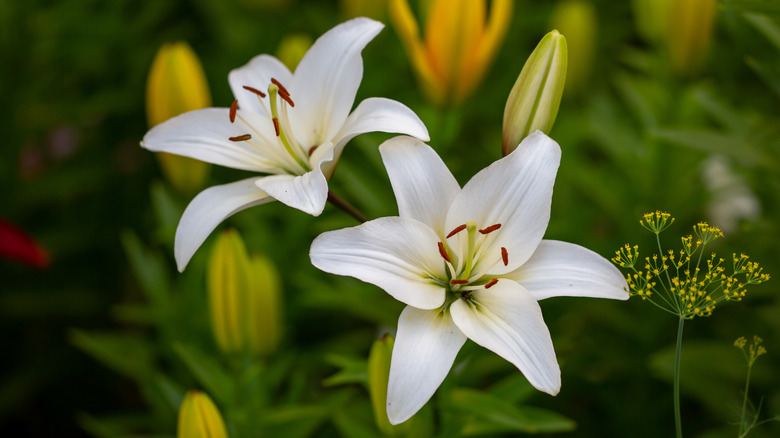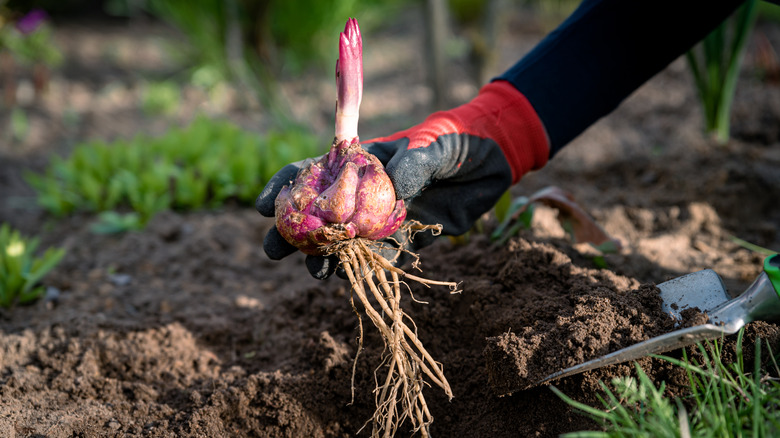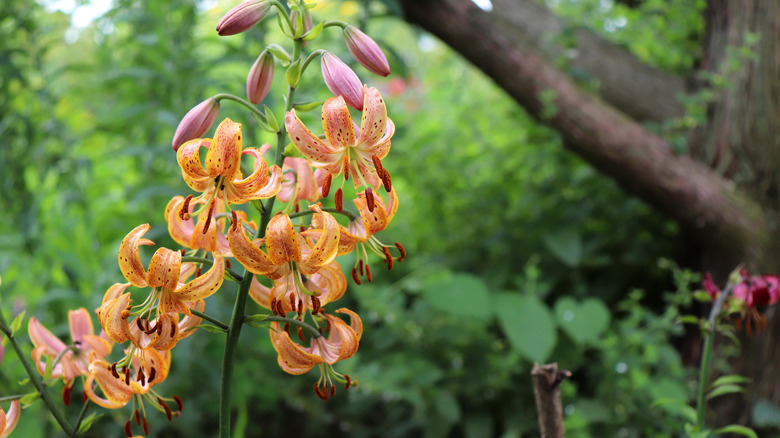The Best Spot In Your Garden To Plant Lilies
Lilies are a favorite of many for their large blooms, low maintenance habit, and gorgeous array of colors. They are one out of just a handful of plants that are grown from true bulbs. Others in this group include tulips, daffodils, and hyacinths. Blooming from summer to early fall, the genus boasts 117 Lilium species and many more cultivars. However, most of them share the same needs for healthy growth. In particular, they need to be planted in well-drained soil with plenty of sun exposure to bloom properly.
Unlike other flowers that grow from bulbs, lilies should not be planted in the winter when the soil is cold and hard because their bulbs are fragile. Lily bulbs are known as imbricate bulbs, which do not yet have a recognizable paper-like shell. Because they lack any protection around their scales, the bulbs must be kept moist and away from pests and wildlife that may damage them before planting. Typically, seasoned gardeners choose to plant their lily bulbs in the early spring or fall, which allows for amazing summer blooms.
The conditions lilies need to grow
As mentioned previously, lilies grow well in average and well-draining soil. Keep in mind, though, they love rich and organic soils the most. Introducing richer soil into your garden for your lily bulbs can help them grow stronger and bloom more prolifically as they put the extra nutrients to good use. Growing your flowers in full sun with some shade near the base of the plant can help keep your lilies healthy. Lillies perform best when the soil beneath them is consistently moist and cool. You can also add mulch around the base of your plants to keep hot sunlight from drying out the soil. But don't overwater them to combat this. Even though they can withstand some excess moisture around their bulbs and roots, too much water may lead to root rot and similar diseases.
All of this necessary care can be made simple by planting your lilies in the right area. A well-lit space with a bit of shade and good soil will provide your flowers with most of what they require. Shading the ground around the flower's roots can be a bit more difficult to achieve, but not impossible. If any of your neighbors are growing plants from bulbs in their yards, you might notice the use of creeping thyme beneath their lilies, tulips, and daffodils, which protect the bulbs from drying out as well as from hungry predators.
How lilies can adapt to your landscape
Planting your lily flowers alongside non-aggressive and low-growing plants such as violets and short marigold varieties is among the best ways to style lilies in your garden. However, it's not the only way. Because lilies are relatively low-maintenance plants and quite adaptable, they can be used in many parts of a home garden. From containers to large colorful plots, you can get creative with these bulbs.
Some different species and cultivars can work better in shadier areas of the garden. For example, martagon lilies, tiger lilies, and leopard lilies all grow better in shadier locations compared to other species. They can be easily grown as perennials under larger trees with little intervention, even naturalizing in some instances. On the other hand, oriental lilies and double Asiatic lilies are great for cut flower gardens and border gardens that receive a bit more direct sunlight. Remember, if you intend on growing lilies for cutting, you should treat their bulbs as annuals to avoid disappointing yields in the coming years.


